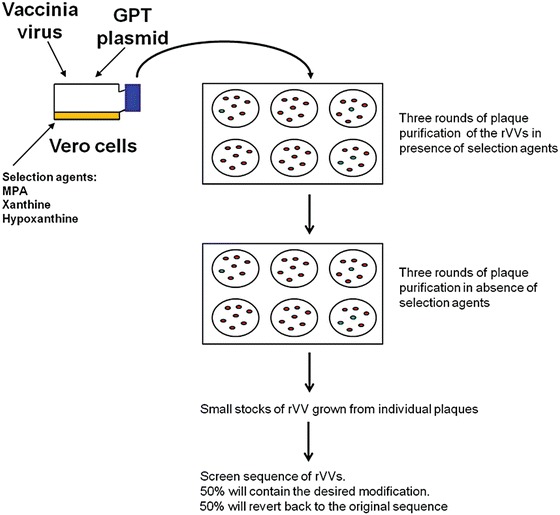Fig. 5.

Schematic detailing the multistep process of constructing a recombinant vaccinia virus. Vero cells are infected with rVV containing IBV cDNA and then transfected with a plasmid containing the IBV sequence to be inserted and the selective marker gene Ecogpt . Homologous recombination occurs and the complete plasmid sequence is inserted into the rVV . The Ecogpt gene allows positive selection of these rVV as it confers resistance to MPA in the presence of xanthine and hypoxanthine. The viruses are plaque purified three times in the presence of selection agents ensuring that no wild-type VV is present. The removal of the selection agents results in a second recombination event with the loss of the Ecogpt gene. Plaque purification in the absence of selection agents ensures not only the loss of the GPT gene but also the maintenance of a single viral population. Small stocks of rVV are grown from individual plaques which are screened through PCR for the desired modification; this is found in theoretically 50% of rVVs
